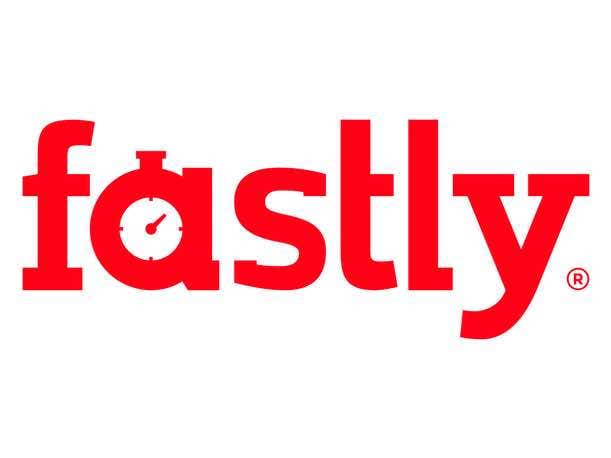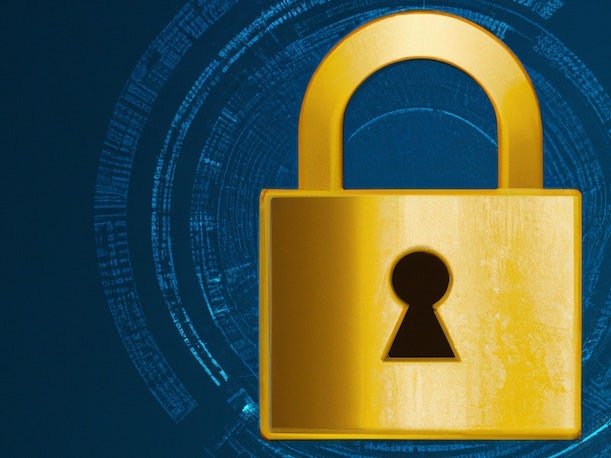Fastly CEO Todd Nightingale: New Partner-Focused CDN Strategy Is ‘First Of Its Kind’
The company is looking to become the first major vendor so far to make content delivery technology into a channel-friendly offering, Nightingale tells CRN in an exclusive interview.

CDN’s Channel Moment?
Web content delivery technology may be decades old at this point, but it’s never represented a major opportunity for the channel in the past, according to Fastly CEO Todd Nightingale. With a new partner-focused strategy for its content delivery network (CDN) technology, however, Fastly is aiming to change that. Fastly will now incentivize partners to package its content delivery network (CDN) technology into their offerings for customers, a move that will be the “first of its kind” in the market, Nightingale told CRN.
Within the CDN space, “there hasn’t been a major vendor that’s really partner-focused, and driving a partner focus across their go-to-market,” he said. However, given the growing priority on digital experiences, “there’s a real need in the market.”
[Related: Cisco Networking And Cloud Leader Todd Nightingale To Join Fastly As CEO]
Other notable players in CDN — a key technology for ensuring strong web content performance — include Akamai and Cloudflare. Research firm MarketsandMarkets pegged the CDN market at $19.2 billion in 2022, rising to $34.5 billion by 2027. Going forward, “digital experiences will define the success and failure of most organizations,” Nightingale said. And that is “driving a need for sophisticated partners to work with those end customers and drive real digital experiences, real outcomes, that matter,” he said.
In exclusive interviews with CRN, Nightingale and Emily Friedberg, group vice president of global partnerships at Fastly, said that the vendor is doubling down on the channel in a number of ways in connection with the revamp of its partner program. Announced Monday, the updates include making Fastly’s full portfolio of web application security products and network services, such as CDN, available to partners. Previously, many Fastly partners were only authorized to sell the company’s next-generation web application firewall (WAF) technology, which originally arrived from Fastly’s acquisition of Signal Sciences in 2020.
A Cisco Systems veteran who joined Fastly as CEO last August, Nightingale said he brought with him a conviction that partners could be pivotal to helping the company achieve its goal of accelerated growth. A publicly traded vendor that was founded in 2011, Fastly saw revenue for the full-year 2022 rise 22 percent to reach $432.7 million, with sales in its fourth quarter growing at the same pace.
Along with discussing the company’s new partner moves around its content delivery technology, Nightingale also spoke with CRN about where Fastly is looking to go next with its security capabilities and why he’s focusing so heavily on partners in the company’s growth strategy.
What follows is an edited portion of CRN’s interview with Nightingale.

What makes you say that your revamped effort around the channel is going to be the first of its kind?
I think when I look at the network service / content delivery space, there hasn’t been a major vendor that’s really partner-focused, and driving a partner focus across their go-to-market. It’s not trivial to invest in [doing] that. And I think that’s good for us. It means that there’s a real need in the market.
Emily [Friedberg] and I have been talking to partners about this — in fact, my first customer meeting at Fastly was with a major partner in the U.S. We’ve seen that there’s a real desire to be able to bring this technology and package it in with their systems integration efforts — to build out apps, especially, but also website and streaming experiences. And right now, there is no go-to, partner-friendly content delivery technology — or I would say, really no holistic edge cloud [that’s partner-friendly] across edge compute, web application security, content delivery, observability. Maybe there’s some point solutions here and there. But by bringing a holistic offer for how to build web experiences with an unprecedented end user experience to the channel, and letting them make that a part of their business, driving a profitable business for them — I think we have an opportunity to really change the way that market works.

I assume some of the historical reasons are that the decision-makers around CDN aren’t those who’d often be talking to a solution provider, like a developer or team of developers. It sounds like you’re saying that perception isn’t right though? At least not anymore?
I do think the perception isn’t right. I think there is and always will be a developer-first motion [with CDN]. And there should be. We see major, essential cloud providers who built their whole business that way. But the channel business, by engaging in enterprise accounts, has an opportunity to reach sophisticated customers up and down the market. And I think the reality is, as end customers are focusing on their digital experiences so much more — as retailers, hospitality chains, entertainment groups are looking carefully at, “Hey, the applications we provide, the web experiences we provide, are so important to our success and failure” — they’re looking to systems integrators and managed service providers [to assist]. They’re looking to the partner community to help them build that.
We just had a three-year tutorial from COVID of how important digital experiences are. And I think people are prepared to get really serious about what that experience is — how fast, how engaging, how safe that experience is for their end user. And they’re looking for some real, professional systems integration to deliver that. So I think if anything, the trend is going to be toward partner activation here.
So you would say that something has changed here, in terms of how applicable this technology is to channel partners?
Absolutely. Something has changed. Digital experiences will define the success and failure of most organizations. It can’t be something that gets done as an afterthought. And that’s driving a need for sophisticated partners to work with those end customers and drive real digital experiences, real outcomes, that matter. At Fastly, we want to be a part of that.

Overall, how would you summarize your vision for working with channel partners?
I think the most important thing on that front is we want to build profitable businesses in partnership with great systems integrators, sophisticated managed service providers, around the world. And we’re excited about that. And I come to it with a great amount of respect for how sophisticated these partners are and the reach that they have into the customer base. I think there’s a huge amount of untapped potential here.
How are you differentiated on security from competitors like Cloudflare?
I think one part of this business that’s so important is being able to enable web application security, without dictating to customers how they have to deploy. It’s why Fastly’s next-gen WAF is so powerful.
If you deploy workloads or stream your traffic through our cloud — on the Fastly platform — of course we enable all of our feature set. But if you don’t, and you deploy it within your own infrastructure, or if you deploy it within AWS, we have the flexibility to deploy in that model as well. And that flexibility, giving customers choice, is key. And the partner community is incredibly adept at enabling all of those deployment models. I think that’s a big part of the differentiation — letting our customers deploy the way they want to do it. If they want to proxy their traffic through us, great. If they want to deploy their workloads on Fastly, great. But if they want to deploy in their own cloud or in an infrastructure-as-a-service cloud, we have a solution for that too. That is super key.

What new areas in security are you interested in exploring going forward? What about SASE (secure access service edge) and zero trust network access, or other security capabilities leveraging your network?
Bot protection is incredibly important. We’re seeing this everywhere. We used to think of it largely as an e-commerce thing. It isn’t. It is far broader than that. It’s a place we’re investing a ton right now. We hope to launch something later this year. It’s a place where we have amazing partnerships across other technology vendors as well. And we’ve been leveraging that to great success for our customer base, too. We’ve had a partnership with Human [Security] that has very sophisticated bot protection, and it’s integrated with Fastly technology.
As far as thinking about the SASE space, at least for now, I think we’re going to stay focused on web application security. When we look at the SASE and IT security side of the house, in a lot of ways that’s the other side of the coin when it comes to cloud security. We focus on web application security because that’s mission-aligned for us, delivering the best possible user experience. It drives to our same go-to-market, to our same buying center — web application, web experience developers.
I think you’re right to say that the infrastructure that we’ve built, an edge cloud, could be used in an application like that. And it’s possible someone could host an application like that on top of our edge compute infrastructure. We just had a [customer] conversation about that yesterday. But for our technology, we’re going to be focused on web application security. We’re going to stay focused on our mission of delivering those digital experiences.

Within the web application security sphere, are there other capabilities you’re interested in adding in the future?
There is a ton of stuff. We’ve looked at certificate management, and we launched [a TLS certification authority] called Certainly. We’ve started looking at [capabilities] around piracy and counterfeiting. I think that is a space that’s only going to mature. It’s very early days there, but it’s something that is really top of mind.
And there’s another piece of this that we’ve been getting more and more interested in, and something that where we have launched some solutions, but I think there’s more room for a ton more innovation. And that’s around compliance, and ensuring that web applications, web experiences, are deployed with the right type of compliance — in terms of geographic routing, data sovereignty, being able to audit where and how your application is being used, in order to be as compliant as possible. Whether that’s [compliance with] regulations or contracts or whatever it might be. We did launch something in the space this year, but I think this is just the beginning.
If there’s one big learning or idea that you brought to Fastly from your time at Cisco, what would that be?
The biggest thing would be, just never underestimate the power of the partner community to bring value. And that’s why I’m so excited to invest here, to build profitable partnerships with the partner community — because the customer outcome is so compelling. We’re focused on the end user experience, and the partner community is focused on the end user experience. Because it’s the outcome that our customers care about. I think these organizations are just incredibly aligned and so I’m super excited about it. If I learned one thing at Cisco, it’s to never underestimate the power of the channel.